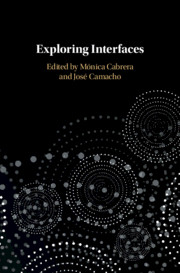Book contents
- Exploring Interfaces
- Exploring Interfaces
- Copyright page
- Contents
- Figures
- Tables
- Preface
- Acknowledgments
- Contributors
- Introduction: The Road to Interfaces
- I Syntax–Lexicon Interface
- 1 The L2 Acquisition of English Anticausative Structures by L1 Spanish Speakers
- 2 Dispositional Evaluative Adjectives: Lexical Alternations, Behaviors, and Sideward Movement
- 3 The Role of P in Spanish Unaccusative Constructions
- 4 Degree Achievements of Color
- II Syntax–Semantics Interface
- III Linearization
- Index
- References
4 - Degree Achievements of Color
from I - Syntax–Lexicon Interface
Published online by Cambridge University Press: 03 August 2019
- Exploring Interfaces
- Exploring Interfaces
- Copyright page
- Contents
- Figures
- Tables
- Preface
- Acknowledgments
- Contributors
- Introduction: The Road to Interfaces
- I Syntax–Lexicon Interface
- 1 The L2 Acquisition of English Anticausative Structures by L1 Spanish Speakers
- 2 Dispositional Evaluative Adjectives: Lexical Alternations, Behaviors, and Sideward Movement
- 3 The Role of P in Spanish Unaccusative Constructions
- 4 Degree Achievements of Color
- II Syntax–Semantics Interface
- III Linearization
- Index
- References
Summary
Degree achievement verbs (increase, fall, grow, age) present challenges for theories of argument structure based on aspectual characterizations (Abusch, 1986; Dowty, 1979, 1991; among others). These verbs show variable behavior with respect to telicity, and, furthermore, the (a)telic interpretation is not straightforwardly affected by properties of the verbs’ arguments, unlike the case of incremental theme verbs (eat an apple vs. eat apples) or directed motion verbs (descend vs. descend the stairs).
A subclass of degree achievement verbs is morphologically related to gradable adjectives (widen, cool, dry, lengthen) and they too exhibit the peculiar telicity properties of the wider class of degree achievements. It is now standardly believed that the aspectual properties of deadjectival degree achievements can be attributed to the scalar structure of the base adjective (Deo et al., 2013; Hay et al., 1999; Kennedy & Levin, 2008; Winter, 2006).
- Type
- Chapter
- Information
- Exploring Interfaces , pp. 85 - 108Publisher: Cambridge University PressPrint publication year: 2019

